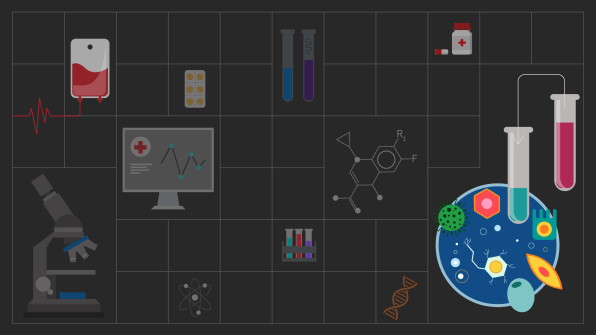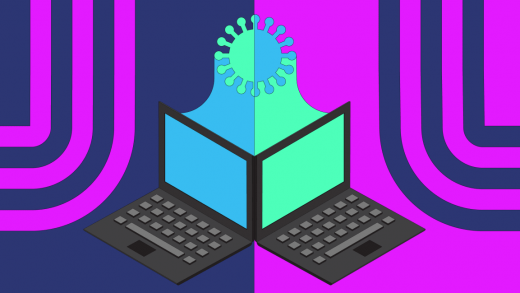Your laptop’s unused computing power can help scientists find COVID-19 treatments
For most people, the COVID-19 pandemic has meant staying inside and, probably, spending a lot of extra time staring at your computer. It may not feel like you’ve been doing much, but that decision to stay home has been important to limiting the virus’s spread. Now, you can make another contribution to public health—helping scientists work to find potential COVID-19 treatments—just by doing the screen time you were doing before.
Anyone in the world with a PC, Mac, Android phone, or Raspberry Pi, and an internet connection can help scientists perform virtual experiments to identify which chemical compounds could be used in treatments for COVID-19, through a project from IBM and Scripps Research called OpenPandemics – COVID-19. That project uses IBM’s World Community Grid, a crowdsourced computing network, to harness your computer’s unused processing power to create a virtual supercomputer for scientists.

These computational tools simulate what may happen in a lab experiment to see how well a compound might perform against a disease. But with millions of compounds to test, there’s a computational problem: Do you have enough computing power to complete those simulations at scale? Without access to a supercomputer, which many researchers don’t have, all that computing would take years. With the World Community Grid, it can be streamlined, with the millions of computations sent out to a massive team of volunteers.
The Community Grid has been a resource for researchers since 2004, and Scripps and IBM have partnered together before on treatments for Ebola and AIDS. “When COVID-19 was starting to become a global health crisis, it was an obvious question we started asking ourselves about how do we apply our technology and track record of supporting scientific research, and apply it to such an emerging health issue?” says Juan Hindo, corporate social responsibility manager for IBM who leads the World Community Grid.
The community grid is such a vital source for researchers because of all the work necessary to just start the drug discovery process. As Hindo explains, it begins with researchers asking which of the millions of chemical compounds that exist (including ones in current medicines) might be effective in combating the disease. Since the grid has existed, more than 770,000 people and 450 organizations have contributed nearly 2 million years of computing power to research projects.
“When you have millions of possibilities against a particular disease, it’s not feasible or practical to actually test all of them in the lab,” she says, because lab work is both time consuming and expensive. “They need a starting point, they need to be pointed in the right direction and to know which of these millions are actually worth investing the resources into. That’s where computational tools can help.”
To be a volunteer, all you need to do is create an account and download the World Community Grid software. You don’t need a brand-new computer, or even to give all of your laptop’s power over to the OpenPandemics – COVID-19 project. “It always gives priority to what you need to do,” Hindo says. “Let’s say you start off reading an email and now you want to watch a video. The app will back off and let you do what you need to do and basically pause the calculation until there’s free capacity again.”
OpenPandemics – COVID-19 officially launched May 14, and by Friday, the World Community Grid already completed more than 50,000 calculations. With the OpenPandemics project, researchers are using this resource to not only look at Sars-CoV-2, which causes COVID-19, but at related coronaviruses, getting a jump-start on finding drugs that could be effective against future similar diseases.
Fast Company , Read Full Story
(14)



